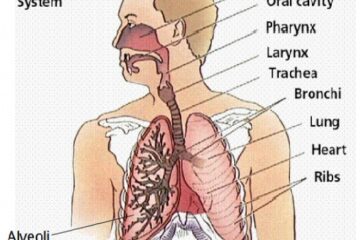Phylum – Coelenterata (Cnidaria)
Phylum – Coelenterata (Cnidaria)
The name Cnidaria- is derived from the word cnidoblast or cnidocytes which contains stinging capsules or nematocytes. This phylum is a group of aquatic or marine organisms. The members of Coelenterata are found in colonies or solitary. Over 11,000 species are found.
Chareceristic feature of coelentrates:
- Habitats: They are aquatic, mostly marine, Free-living, or maybe sessile.
- Body symmetry: These are radially symmetrical animals.
- Level of organization: They exhibit a tissue level of organization.
- Diploblastic i.e. the cell found in two embryonic layers as external ectoderm and internal endoderm, undifferentiated mesoglea found between ectoderm and endoderm.
- Uses of cnidocytes: Cnidocytes present on the tentacles and body, used for anchorage, defense, and prey capture.
- Digestion: In Coelenterates the digestion is found extracellular and intracellular. A central gastro-vascular cavity having a single opening, the mouth is found on the hypostome.
- Excretion and respiration through simple diffusion.
- Skeleton: In some cnidarians like corals, the skeleton is composed of calcium carbonate.
Body forms in Cnidarians
The Cnidarians exhibit two body forms (polymorphisms):
-
- Polyp– Nutritive zooids, are in a cylindrical form and sessile asexual stage.
- Example: Hydra and Adamsia are examples of this category.
- Medusa– Sexual zooid, these are umbrella-shaped and free-swimming.
- Example- Aurelia or jellyfish.
- Polyp– Nutritive zooids, are in a cylindrical form and sessile asexual stage.

Medusa and polyp in aurelia and admasia
- Reproduction is mostly asexual through budding, in a few members sexual reproduction is seen.
Alternation of generation: Some cnidarians exist in both forms, alternation of generation (metagenesis) is found in them.
- Metagenesis– Polyp produces medusae by asexual reproduction and medusae produce polyps by sexual reproduction. e.g. Obelia
Holoblastic cleavage. Development is direct or indirect through planula larva (Obelia) or Scyphistoma and ephyra larva (Aurelia)

Polymorphism in Cnidaria
Scientific Classification of Coelenterata
| Kingdom | Animalia |
| Subkingdom | Eumetazoa |
| Phylum | Coelenterata |
Classification in Coelenterata
- Anthozoa
- Hydrozoa
- Scyphozoa
Anthozoa
Features of Anthozoa:
- The members are exclusively marine
- Mesoglea contains fibrous connective tissues and amoeboid cells
- Medusa stage is not present.
- Example: Metridium, Xenia, Telesto
Hydrozoa
Features of Hydrozoa:
- Hydrozoa is mostly marine, Few freshwater animals.
- some are solitary and some colonial
- The asexual polyp is dominant
- Medusa possesses true velum
- Mesoglea is acellualr
- Example: Obelia, Hydra, Physalia
Scyphozoa
Features of Scyphozoa:
- Scyphozoa are exclusively marine
- Medusa is dominant
- Polyp absent
- Cellular mesoglea
- Example: Aurelia (jellyfish), Rhizostomata
Some examples of cnidarians: Physalia (Portuguese man-of-war), Pennatula (Sea-pen), Admasia (Sea anemone), Pennatula (Sea-pen), Meandrina (Brain coral), and Gorgonia (Sea-fan).
You can also read:
- Phylum Porifera
- Phylum Ctenophora
- Phylum Platyhelminthes
- Phylum-Annelida
- Phylum-Arthropoda
- Phylum-Mollusca
- Phylum-Echinodermata
- Phylum-Chordata
Thank You 🙂



7 Comments
Animal kingdom PCSSTUDIES - Biology - Animal kingdom · May 29, 2021 at 8:03 am
[…] Phylum – Coelenterata (Cnidaria) […]
Phylum Aschelminthes - PCSSTUDIES - Biology % · May 29, 2021 at 3:39 pm
[…] Phylum – Coelenterata (Cnidaria) […]
Phylum-Mollusca - PCSSTUDIES - Biology - Phylum-Mollusca · May 29, 2021 at 7:04 pm
[…] Phylum Coelenterata […]
Phylum-Echinodermata - PCSSTUDIES - Biology % · May 30, 2021 at 12:44 am
[…] Phylum Coelenterata […]
PCSSTUDIES - Characteristics and Classification of Phylum Chordata % - · May 30, 2021 at 1:04 am
[…] Phylum – Coelenterata (Cnidaria) […]
Phylum-Hemichordata - PCSSTUDIES - Biology % · May 30, 2021 at 2:02 am
[…] Phylum Coelenterata […]
Phylum - Porifera - PCSSTUDIES - Biology - porifers · June 2, 2021 at 10:49 pm
[…] Phylum Coelenterata […]